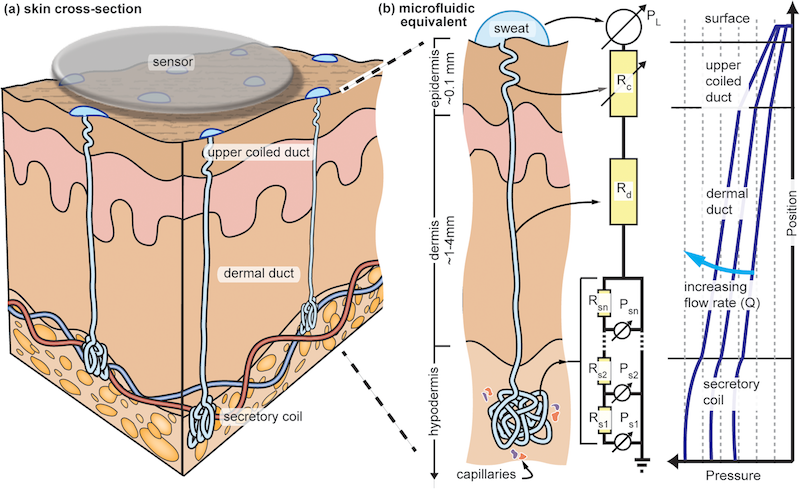
We act through muscles and glands. Glands, specifically sweat glands, are a potentially rich source of personal data and a promising target for wearable technology.
New wearable sweat sensors are appearing on the market (Eccrine Systems, Inc., biolinq) and the recent paper “The microfluidics of the eccrine sweat gland, including biomarker partitioning, transport, and biosensing implications” published May 15, 2015 in Biomicrofluidics points to exciting insights we may gain from sweat sensing wearable technologies.
Collating years of sweat gland research, the authors describe measurable constituents of sweat, from tiny charged sodium and chloride ions to protein molecules like neuropeptide Y and various cytokines. It’s well established that a significant increase in sweat chloride concentrations suggest a diagnosis of cystic fibrosis. It’s also well known that alcohol appears in sweat about five minutes after drinking an alcoholic beverage. More recent research suggests that data gathered from sweat have the potential to indicate (provide markers) for far more, including insight into a person’s cognitive state. For example, neuropeptide Y, known to sometimes play a role as an anti-stress and anti-depressive agent, is found in sweat in proportion with its concentration in blood.
Meanwhile, first to market wearables that sense sweat are targeting the exercise market (Kenzen). Potassium ion concentration in sweat is proportional to blood concentration and can predict muscle activity, ammonia in sweat is related to exercise intensity, and high exertion exercise results in higher concentrations of lactate in sweat.
Twenty-sixteen is looking like the year that generally available wearable gadgets will get more interesting. Sweat sensor wearables may provide a new way to monitor chronic health issues, drug research, and more.